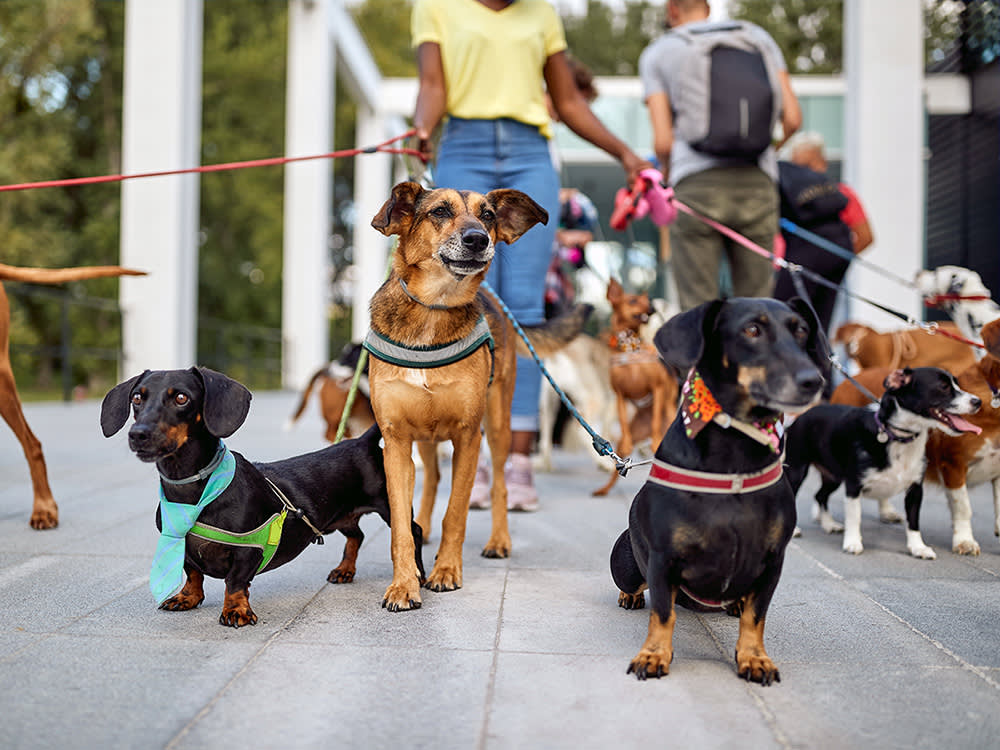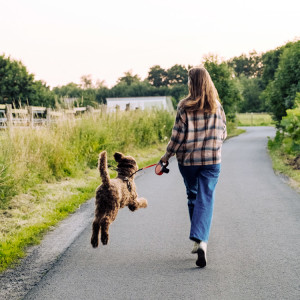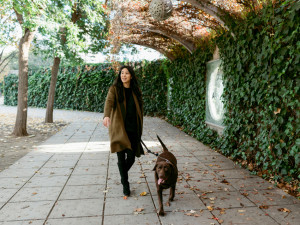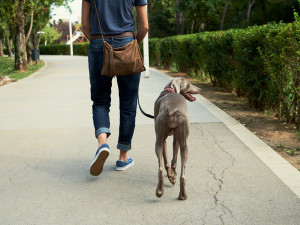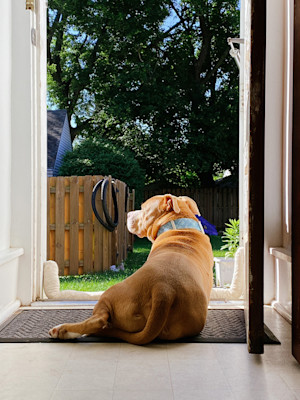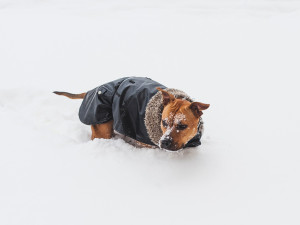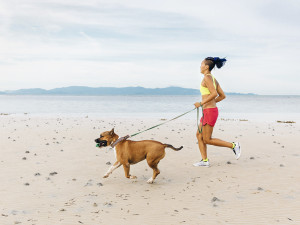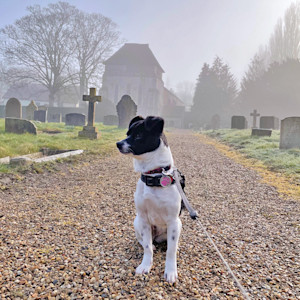I’m a Professional Dog Walker & Here’s What I Really Think of Your Dog
Jade from Fetch Londonopens in new tab, shares what it’s really like to be a professional dog walker
It’s really hard to have a bad day when you’re greeted every morning by wagging tails and positive energy. My journey into becoming a full-time professional dog walker started after the pandemic when everyone began to go back to work and the need grew for dog walkers.
I’d been doing it on a casual basis prior to the pandemic, and then when my job in the travel industry began to fall apart during lockdown, turning my side hustle into a real career started to sound very appealing. I began getting more requests to walk more dogs and I realised that I was actually in the exact right place at the exact right time. Now, my partner and I run a dog walking, daycare and boarding businessopens in new tab full-time in Crouch End, London.
What my day-to-day looks like
A lot of our dogs need collecting before their pet parents go to work, so we’re out picking up dogs by around 8am, and we’ll do our first walks around 9am. I walk up to four dogs at a time, which is considered a small group compared to the majority of people in our area, and I will do about three walks a day – so I’m typically walking about 12 dogs a day and my partner is usually doing the same. Each walk is between an hour and an hour-and-a-half, but obviously we have the pick-ups in between, so we’re usually walking until around 3pm and then we do our last dog drop-offs at the end of the day around 6pm.
We work a lot of hours and it’s definitely a lifestyle choice because we also work weekends and we might go 28 days straight without a day off. But on a weekend it might just be one walk, or it might be one or two dogs staying overnight while their pet parents are away for the weekend, so it doesn’t feel like too much like hard work. I also love being outdoors and I feel that my mental health has been a lot better compared with working in an office five days a week.
How we choose our dog groups
We tend to try and create a group of dogs with a really similar temperament – we want dogs to be pretty neutral with each other. If we have playful ones, we only put them in groups with dogs that are also playful or with dogs that we know will ask for space in a very balanced and calm way. We don’t take on any dogs that are not good at taking canine social cues because we want all our dogs to be comfortable. And if we have dogs that are in training or nervous or anxious, then we only ever take one of those at a time and are careful about who we put them in a group with; ideally with calm, confident dogs who can pass other dogs without interacting with them, so that our anxious or shy dogs can follow their lead.
It can be quite a slow process trying to acclimatise nervous or reactive dogs, so between the two of us, we’ll do slow introductions using a long line initially, making sure to do everything at the dog’s pace so that our other confident dogs feel at ease, too.
What happens if our dogs don’t get on with each other?
This happens very rarely to us but it has taken us by surprise in the past when we’ve assumed that dogs will get on because they have a similar temperament or they typically get on with that type of breed, but for some reason they might just happen not to like the other dog. To mitigate this, we always do slow introductions to ensure we’re never putting any dogs at risk when they get introduced to each other. And ultimately if they don’t get on, we simply just don’t put them in that group together and they probably won’t see each other again.
Some of the reasons for this might be age, maybe one of them hasn’t been neutered yet or they’re in adolescent years. That being the case, we might try the intro again at a later date and we have had some really good success with that, but usually we tend to just keep them in separate groups and there’s no need for them to cross paths.
How much dog training we actually do
Training is an aspect of being a dog walker that I think can go unappreciated. We do loads of training: we train all our dogs not to react to our doorbells, not to jump up, not to demand-bark and more – we’re effectively training them constantly. It’s really interesting when you see some dogs who can have totally different behaviour with us as a result of the training we’ve put in versus the behaviour they display with their dog parents.
But training is vital for us. I would never want to be in a situation with a group of dogs where I didn’t have them fully under control, so we put a lot of time into making sure they’re well-trained and under control at all times. I think we got really lucky because we got lots of pandemic puppies at the start and we trained them from the get go, so the new dogs that come in sort of follow their lead and now we’re in a place where all the dogs know how to behave for us and it’s actually pretty easy-going.
Do we judge you on your dog’s behaviour?
Thankfully, we haven’t had a situation where a dog parent has had a different training approach to us or hasn’t been willing to take our advice on something. We’re quite specific about who we work with and if we ever found that we were putting in the work to help a dog’s recall from Tuesday to Thursday, for instance, but then the pet parent is undoing all of that work from Friday to Monday because they don’t see a problem with their dog running up to every dog, then we usually wouldn’t work with that person again – we do all need to be on the same page and have the same values.
Maybe there’s a little bit of judgement but generally I think it’s fair enough for people not to automatically know how to train a new dog and not get everything right the first time; we’re professionals and we do it every single day. So I wouldn’t judge anyone unless they just don’t care.
The stressful part
The only real downside? Pet parents we encounter on walks who don’t keep their dogs under control or are not respectful of dogs that need space. Since doing this full-time, I’ve realised that the majority of people really don’t have any idea about dog behaviour – it’s not something that they’ve ever looked into or tried to understand, which means they don’t know how to read their dog’s body language or other dogs’ body language.
I’ve had instances of dogs charging up to our group in a very overstimulated way, or people who might let their dogs rile our dogs up and that can be really difficult. There’s been times in the past where I’ve asked people to recall their dogs for a number of different reasons and I’ve had them be really rude to me about it, no matter how politely I’ve asked! I know some pet parents think their dogs are being friendly but if you understand dog behaviour, that’s often not the case at all.
Sometimes we might be working with dogs who are in training or who have recently been attacked or had operations or have been rescued and they need more space, so it’s really important that as their dog walkers we can advocate for them – so it can be very difficult when another dog doesn’t recall and their walker or pet parent doesn’t stop their behaviour when asked!
But I wouldn’t change any of it for the world – I love all the dogs we work with and we’re lucky that we have a core group that we’ve known since they were puppies from the start of our full-time launch, so we have a lot of love for them. We’re actually in two of their pet parents’ wills to be the first choice to look after their dogs if anything was to ever happen. The dogs are part of our family and we’re part of theirs.
As told to Ro Elfberg. Find out more about Fetch London on Instagramopens in new tab.
